• Audio Visual Controller for Virtual Burning Man •
Project Overview
Burntroller is a dynamic table app crafted for a virtual Burning Man experience—a metaverse where pre-built camp environments come alive through live sound and music. This project reimagines the role of a lighting engineer by allowing users to manipulate and shape the ambiance of an already constructed virtual camp with far greater creative abilities.
My Role
UX/UI Designer – Responsible for research, wireframing, prototyping, and final UI design. Collaborated with another exceptional designer to blend complementary skills and drive the project from concept to completion.
Background & Context
• Pre-Built Virtual Camp: The virtual camp is built beforehand. Burntroller’s role is not to create the environment but to empower users to modify it in real time.
• Inspiration: Drawing from the experimental and communal spirit of Burning Man, the interface enables a designated controller or camp member to transform the camp's mood dynamically—much like a live lighting engineer, but with an extensive array of effects and possibilities.
Problem Statement
In the virtual Burning Man metaverse, each camp is uniquely pre-built, offering immersive environments. However, there was no intuitive tool that allowed participants to shape and interact with these spaces dynamically based on live audio—especially for those without prior experience in 3D or sound software.
Goals
• Design an interface that transforms live sound into visual and environmental changes.
• Make it accessible, playful, and experimentation-friendly.
• Empower users to influence their camp's atmosphere without needing technical knowledge.
• Offer creative freedom similar to a lighting engineer, but with expanded environmental capabilities.
User Insight
• Users value freedom and creativity: They want tools that feel open and expressive, not limiting or overly technical.
• Live responsiveness is key: Users expect immediate visual feedback when interacting with sound-based inputs.
• Simplicity matters: Many participants have no technical background, so controls must be intuitive and visually guided.
• Customization enhances ownership: Users want to save and revisit their setups—presets and visual variation are important for personal expression.
Persona
Maya, 29, Herzliya – Vibe Curator; graphic designer and DJ with a passion for immersive experiences.
Goals:
• Control the environment live while DJing or during performances.
• Create moods that match the energy of the moment.
• Use sound as a creative tool to sculpt space.
• Create moods that match the energy of the moment.
• Use sound as a creative tool to sculpt space.
Frustrations:
• Overly complex software that disrupts flow.
• Lack of real-time control or feedback.
• Tools that require prior technical knowledge.
• Lack of real-time control or feedback.
• Tools that require prior technical knowledge.
Concept Research
To design a sound-responsive controller that feels powerful yet approachable, I explored a range of audiovisual tools and environments used in live settings and creative software:
Inspiration sources included:
• Spacemap Go – For spatialized sound movement and intuitive visual mapping.
• Reactable – For playful, physical interaction with sound-based elements.
• DAWs like Cubase and Ableton – For channel-based control, presets, and flexible automation.
• Chromateq – For interfaces that react to performance timing and live control.
• Reactable – For playful, physical interaction with sound-based elements.
• DAWs like Cubase and Ableton – For channel-based control, presets, and flexible automation.
• Chromateq – For interfaces that react to performance timing and live control.
This research informed the use of frequency-based channels, drag-and-drop interactions, and the integration of customizable presets.


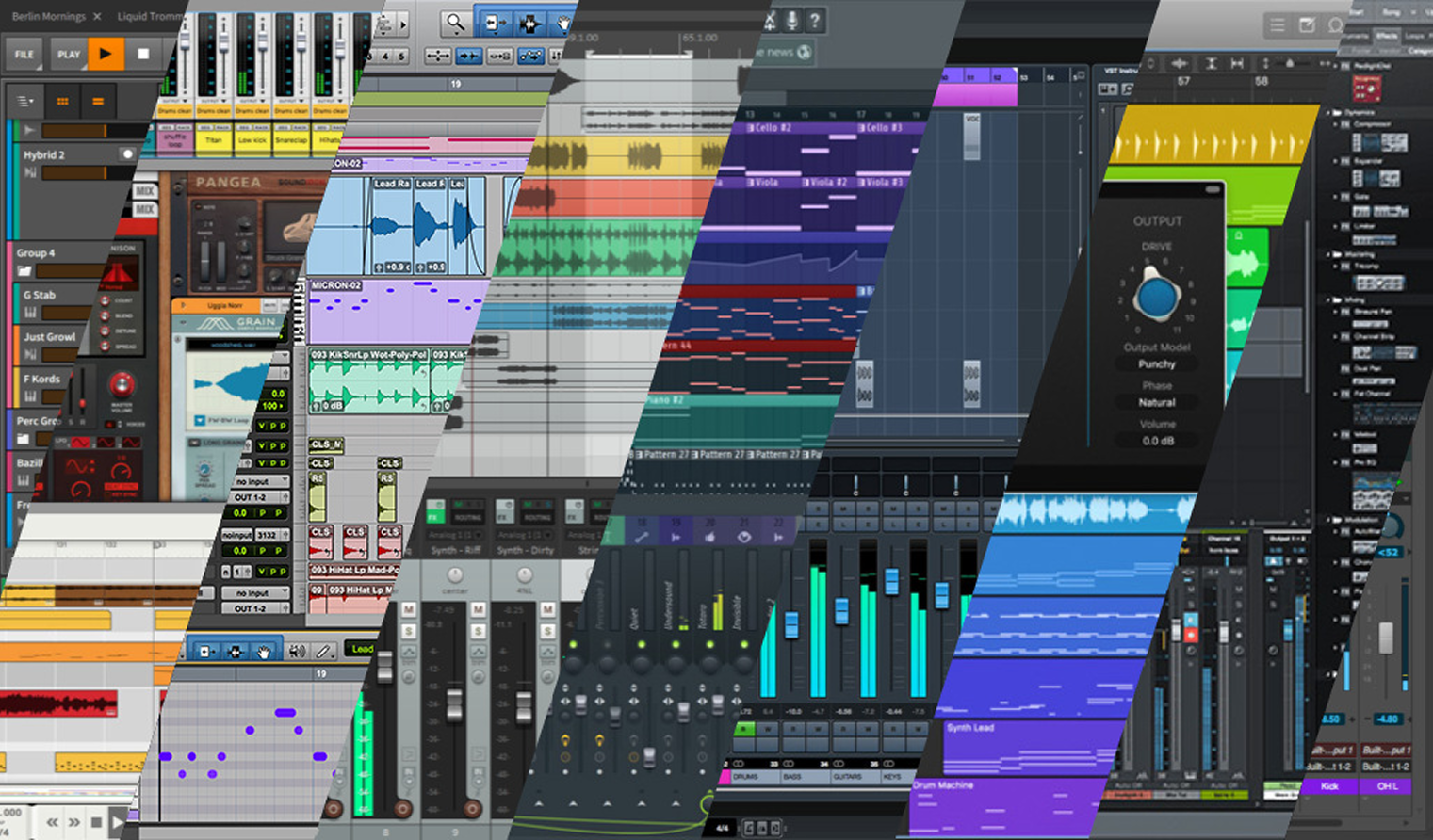

Visual Research
The visual language draws from modern dark-themed applications with a clean, minimal interface style—balancing clarity with creativity.
Key influences:
• Modern app design – Dark UI, subtle gradients, minimal skeuomorphism.
• Creative software – Photoshop, Unity, and Cubase inspired the layout structure and panel hierarchy.
• 3D & sound tool aesthetics – A mix of functional clarity and expressive interface design helped shape the UI tone.
• Creative software – Photoshop, Unity, and Cubase inspired the layout structure and panel hierarchy.
• 3D & sound tool aesthetics – A mix of functional clarity and expressive interface design helped shape the UI tone.
The result is a system that feels both familiar and inspiring—made to invite interaction and encourage spontaneous creation.




Core Takeaways
• Objective: Design an intuitive, playful, and experiment-friendly controller that lets any user - regardless of technical background—dynamically alter a pre-existing virtual camp environment through live sound and music.
• Key Concept: By visually translating auditory inputs into dynamic interactions, the app will allow users to create a set of live rules that alter the virtual ambiance. Think of it as an advanced, creative tool that goes beyond traditional lighting control.
Wireframes & Flow Overview
To maximize usability on a single screen, the interface was structured around core functional panels:
• Music Spectrum Panel – Displays frequency channels and live sound input; the main interaction zone.
• Object Library – Categorized effects and modifiers for drag & drop.
• Color Editor – Customize color-based objects.
• Presets Panel – Load and save configurations.
• Live View – Displays real-time changes in the environment.
• Utility Actions – Clear, mute, or deactivate all elements.
Everything happens in one continuous space. The user explores the object library, creates custom color objects, and places them onto sound channels. Elements can be adjusted, grouped, muted, or deleted live. Once satisfied, users can save the setup as a preset, clear the canvas, or load a previous configuration.



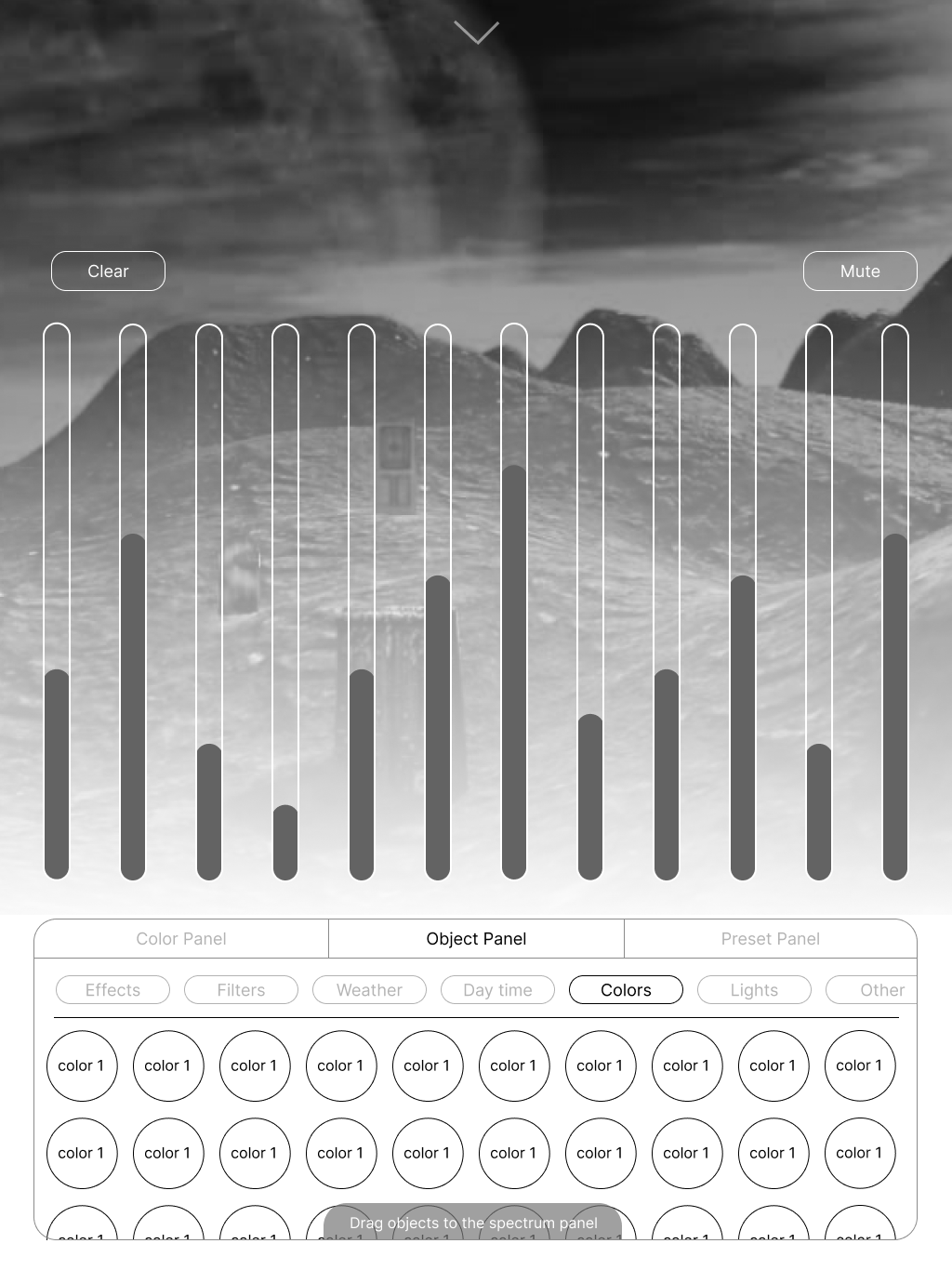







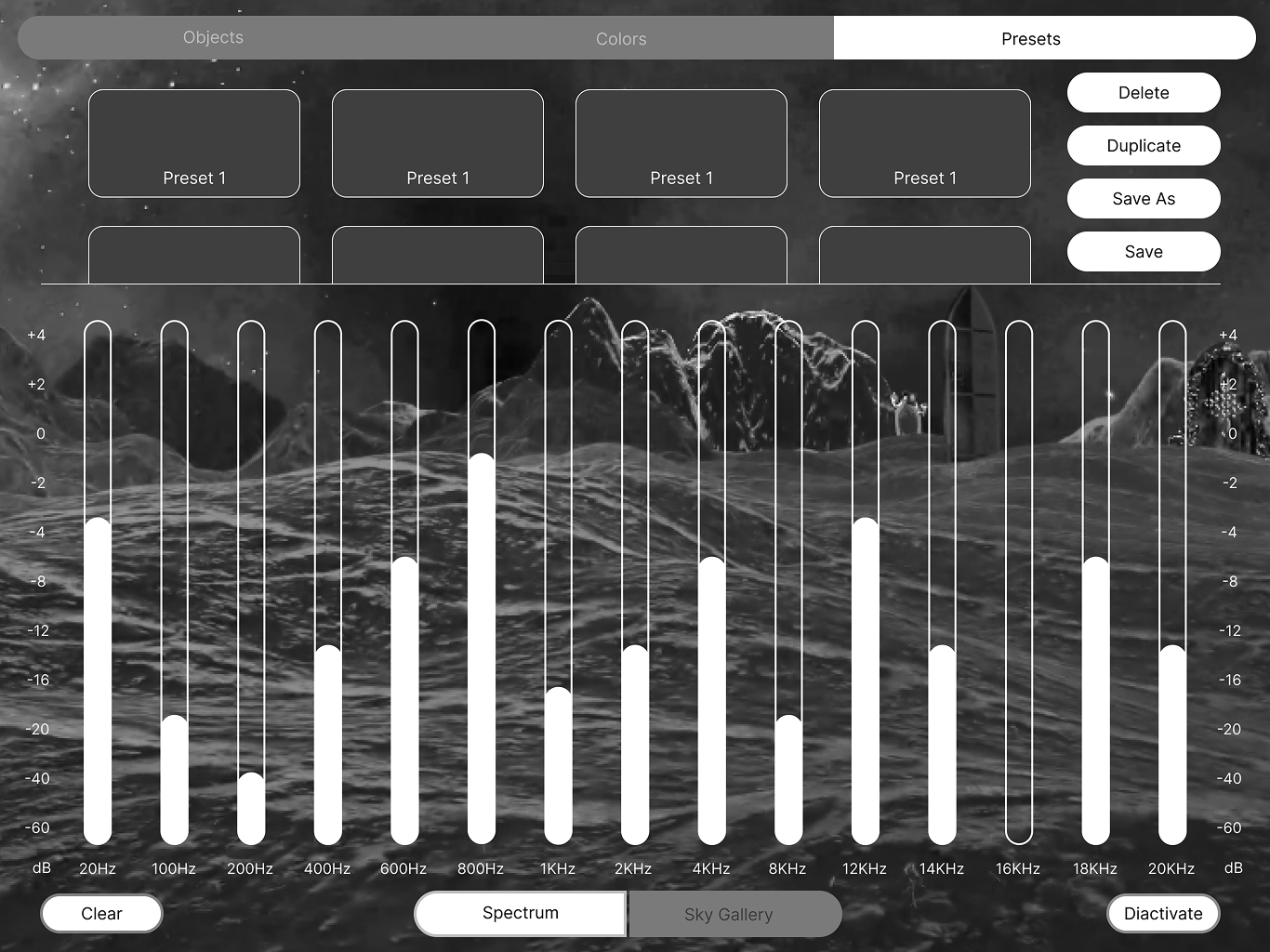
Prototypes
Multiple prototypes were developed throughout the design process, refined continuously based on user feedback.
Key insights from testing:
• The Spectrum Panel is the focal point—it must be large and central.
• Drag & drop is the primary interaction—placing the Object Library directly beneath the spectrum enhances flow.
• Carefully optimize the number of channels, object sizing, and spacing for comfortable use on a tablet.
• Use collapsible tabs for secondary panels to preserve screen space.
• Maintain a minimal and intuitive design, minimizing distractions.
• Above all, keep the experience simple, responsive, and playful, true to the spirit of Burning Man.

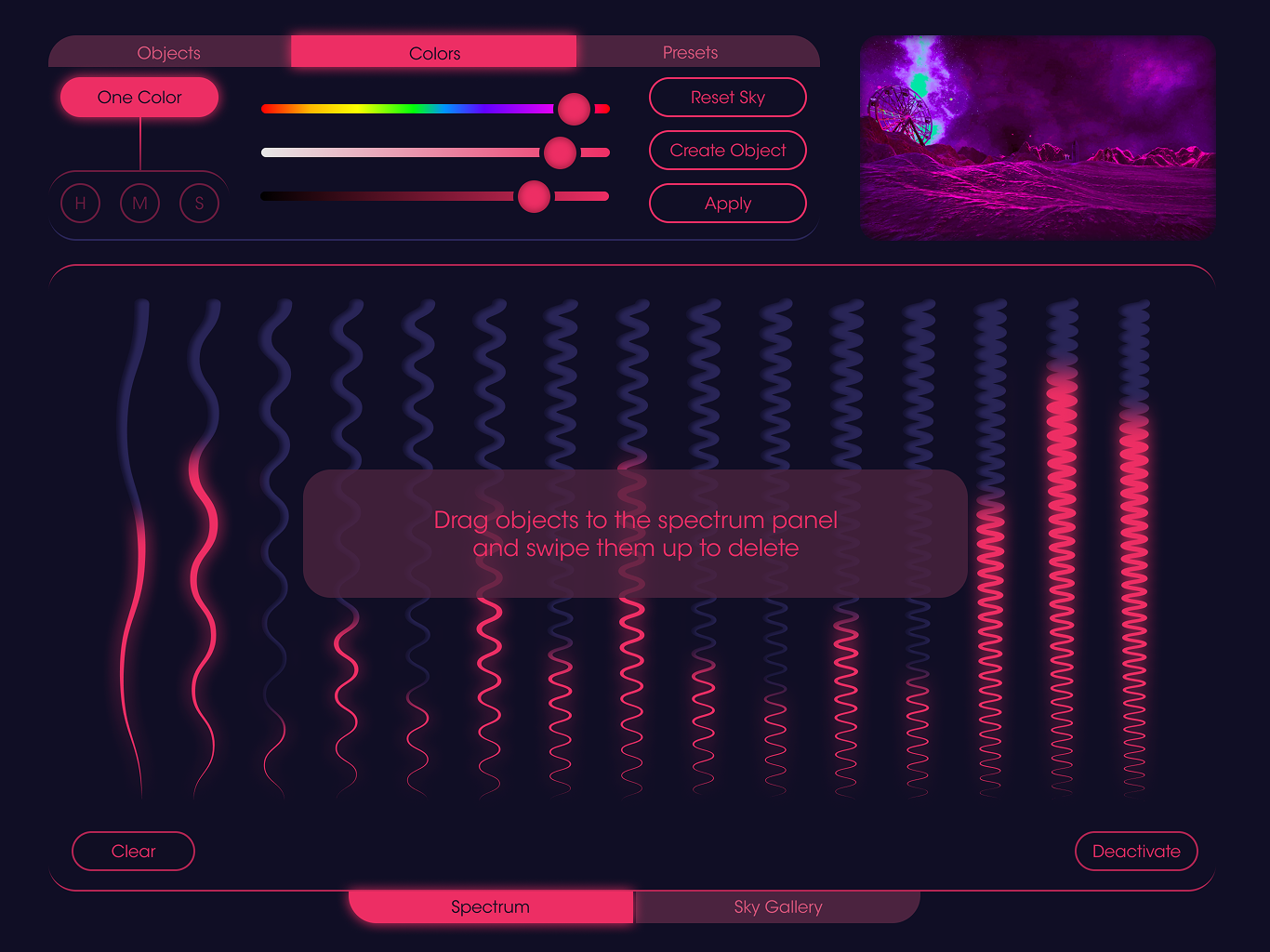
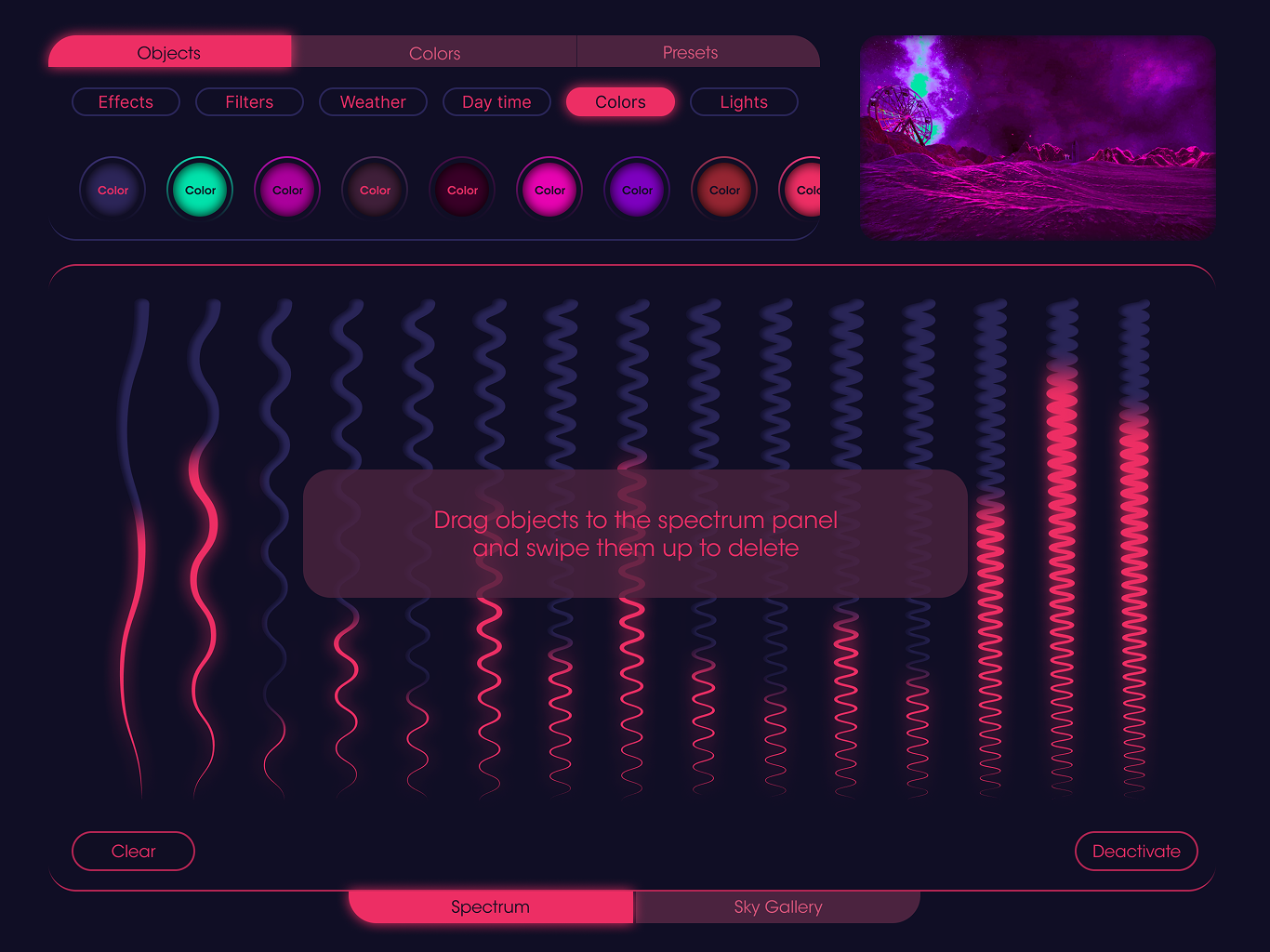
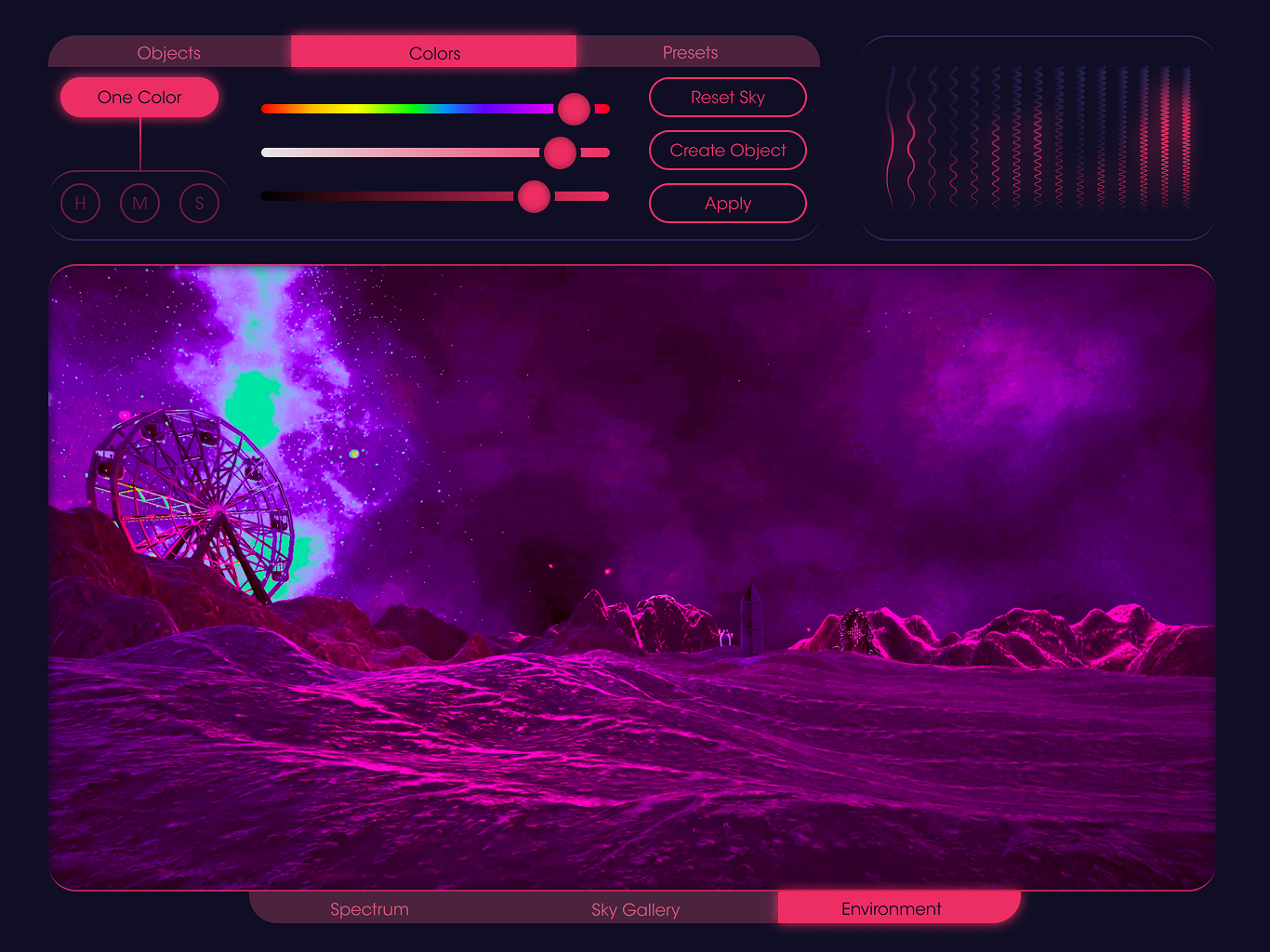

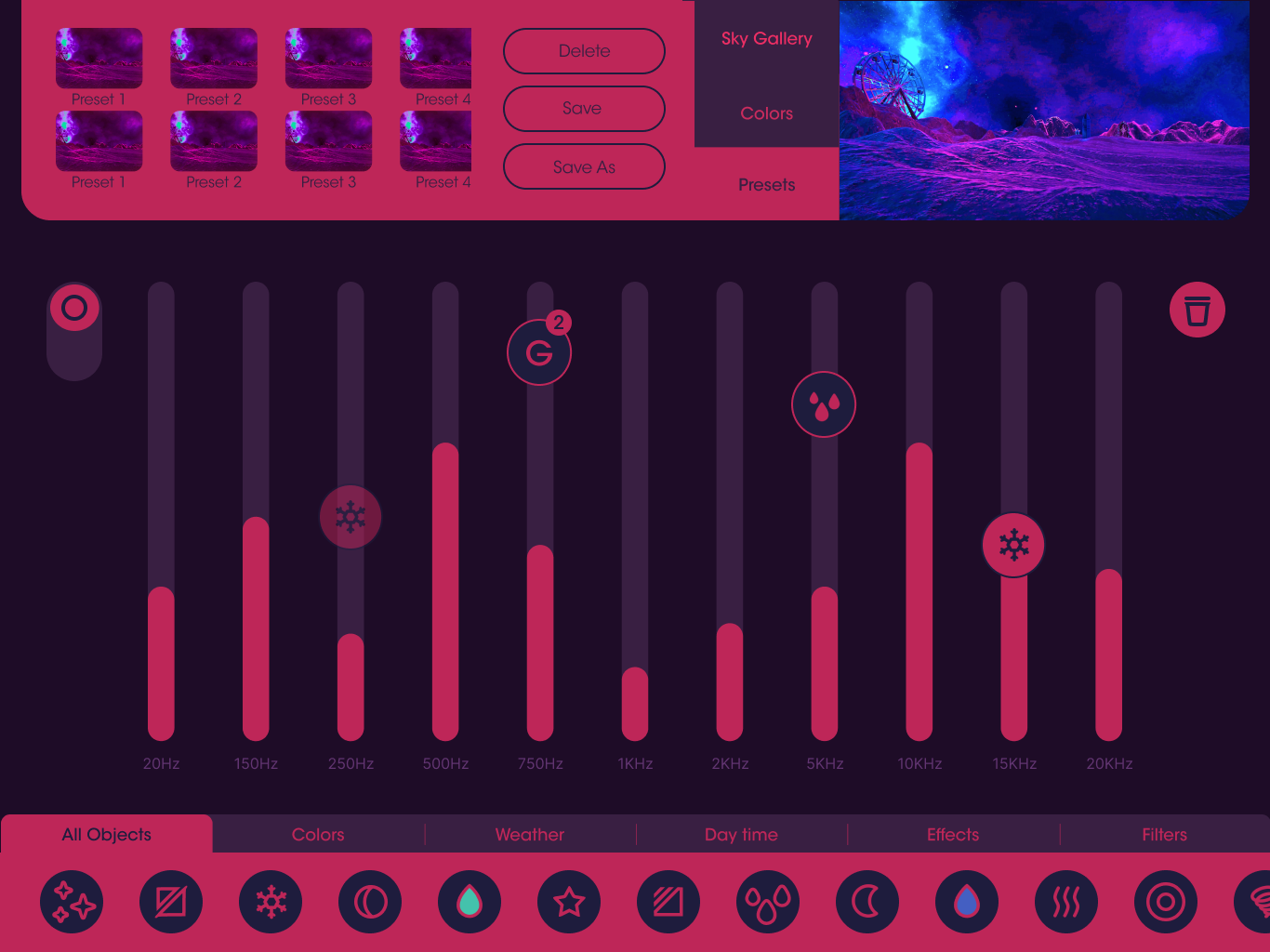
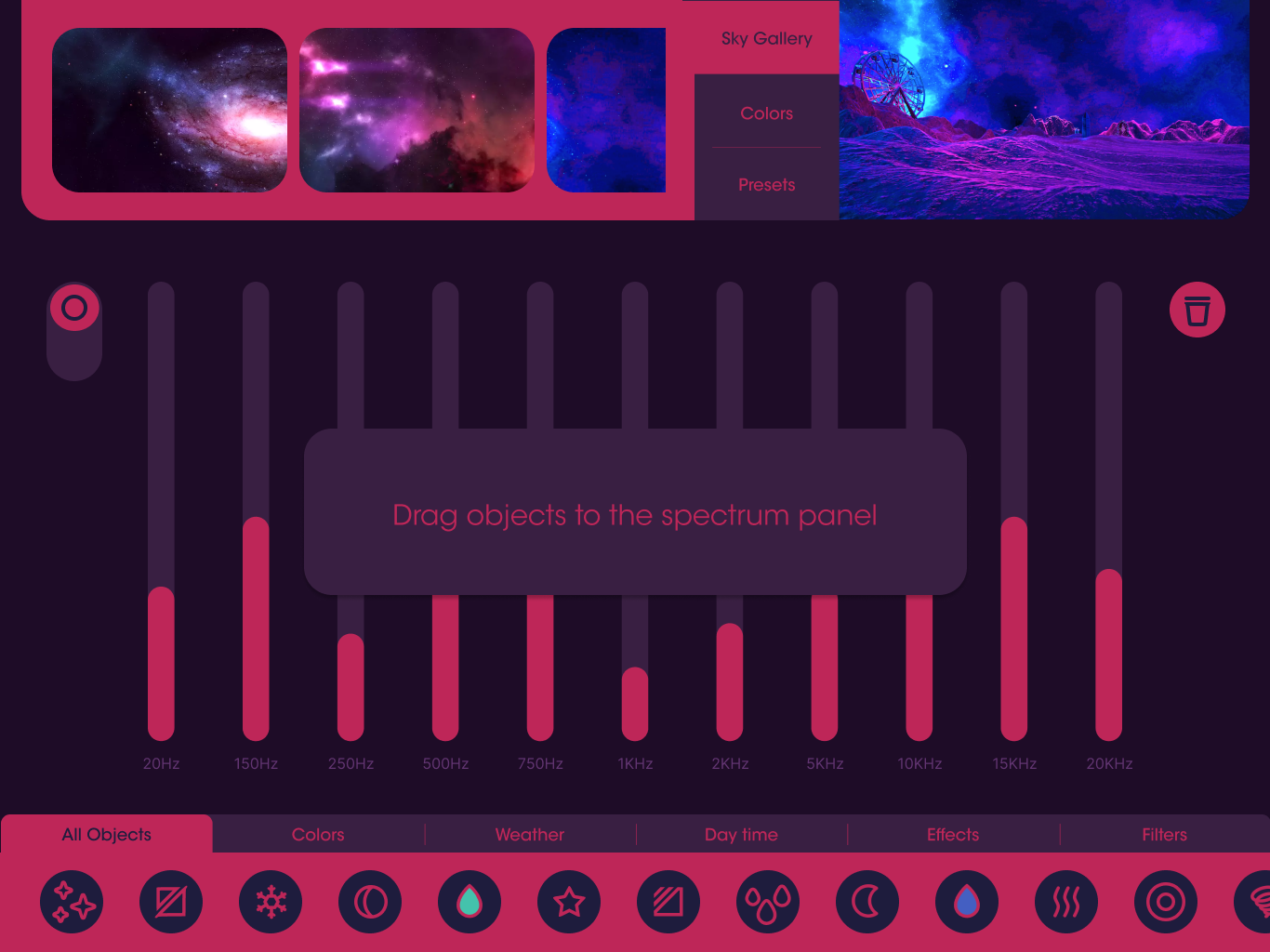






Interface Elements
The UI is built around clarity and expressiveness. Panels and controls are laid out for intuitive flow, with special attention to touch-friendly sizing, spacing, and hierarchy. Tabbed panels, soft shadows, and subtle gradients were used to balance playfulness with a professional feel.




Iconography
The interface features a set of stock icons chosen for their unique balance of creativity and minimalism. Their expressive character felt like a natural fit for the Burning Man spirit—playful, lively, and non-corporate.
Layout & Responsiveness
The interface is designed as a single-screen experience, optimized for tablet use. The layout prioritizes clarity and flow, with collapsible side panels that minimize visual clutter and keep the spectrum panel central and dominant.
For deeper focus, users can:
• Swipe down to expand the spectrum panel into full-screen mode for precise editing.
• Open the live view in full-screen, providing an immersive window into the camp’s evolving environment.
Elements were carefully spaced and scaled for touch interaction, creating a comfortable and efficient layout that supports both playful experimentation and focused control.


Onboarding
The onboarding process introduces key features on app launch, guiding users through the basics with an interactive walkthrough. It covers actions like using the spectrum, dragging objects, and adjusting settings. Users can skip the tutorial or revisit it at any time for a smooth and non-intrusive introduction.




Outcome & Takeaways
The project successfully delivered an intuitive and immersive tool that allowed users to dynamically shape their virtual environment through live sound. The design’s simplicity and playful nature made it accessible to both seasoned creators and newcomers, staying true to the Burning Man spirit of creativity and experimentation.
Key takeaways:
• User-centric design led to intuitive controls and easy exploration.
• Flexibility and real-time feedback empowered users to experiment without technical barriers.
• Simplicity was key - maintaining a balance between powerful functionality and ease of use.
This project reinforced the importance of creating engaging and accessible interfaces that allow users to express themselves creatively while ensuring seamless interaction.

